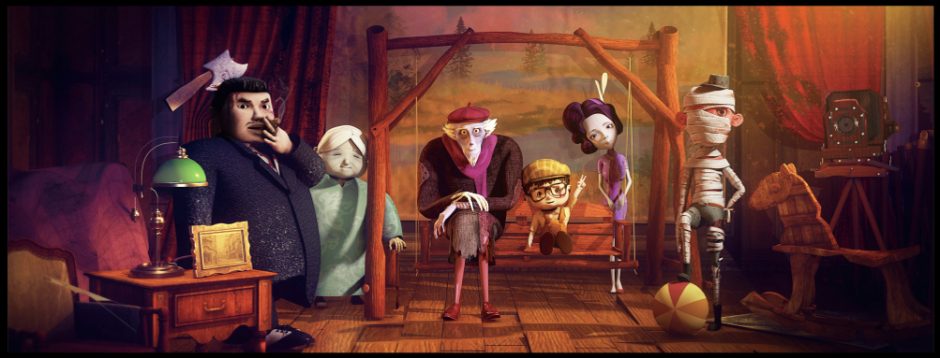Investigation and Practice on the Form and Content of Irony Animation
- Thesis – Investigation
- Final Major Project – Practice
Final Major Project
Aims
Based on the three semester keying animation practice and the cognition of film language, I want to complete a short narrative animation combining the two. Generally speaking, the previous animation exercises are fragment type, the purpose of which is to training animation skills and principles, without special plot or thought expression. Therefore in my final project, I hope I can create a connotative animation, which can express my thoughts and feelings on some social situations with storytelling, logicality and creativity. I hope my animation can arouse others’ reflection and thinking, which is my goal of creating animation. I will be willing to show my views and perception in an exaggerated and ironic way of animation.
Rationale
Considering that my FMP project is the summary of my personal learning situation and the embodiment of my professional ability, when considering what type of project to do, my approach is to first consider what I am good at and what I want to show. I know that the fields I like and am good at are model creation and keying animation, that is to say, I hope to be engaged in animation related career in the future, so I choose to do an irony narrative animation. At the same time, I wish to fully show my pre-production and post capability, focusing on the ability to tell stories and reveal the truth, as well as the 3d skills to create character and scenes, as well as rigging and keying animation.
Content
The narrative animation I want to do this time is more accurately irony animation, that is to show some cruel or unbearable reality through animation works. There’s no doubt that our society is plagued with problems like dependence on technology, taxes, obesity, devaluation of workers etc. But that is not the real threat. The real threat is the fact that we refuse to acknowledge these problems to justify our addiction to them. The plot of my animation this time is that a person addicted to computer games becomes the raw material of the food he eats by constantly eating. It’s a simple story that takes place in a room, the process of which is very similar to a cycle. I call it a new way of feeding, that is, “we become what we eat.”
Methodology
In depth analysis of other irony animation features and narrative style, and then complete the storyboard and layout. Then I will create a character and a scene independently, including mapping and rigging, and finally lighting and rendering. I will focus on strengthening my ability in character creation and rigging, combined with my internship learning and some tutorials. What I want to show is exaggeration and atmosphere brought by the picture, and the character’s animation will not be many and complex. I will do more preparation work in the shape of the character, including the details of the scene, because compared with some fighting animation, irony animation needs a lot of obscure but reasonable elements. It will be an animation that allow the audience to watch repeatedly without feeling boring, and the details will be pondered and arranged.
Personal and career development
My project will be carried out simultaneously with my internship in China, because the content of the internship is the in-depth study of creating character model and rigging. I hope that through this training, the model in my personal project can reach a higher level, so as to better show my good field in the animation industry. My challenge is how to use the film language and narrative structure to present the phenomenon I want to expose in an exaggerated way of 3d animation.
Reference
Animations
- The village
- The employment
- Life Smartphone
- Dinner for few
Thesis
Relevance (Fmp)
My thesis is actually closely related to my FMP, because the concept of irony animation is a strange word to me. In fact, it’s my first time to try this kind of animation, and it’s related to my internship content, And I hope to gain work experience through this work in the future, so I hope my preparation is very sufficient. So I chose my thesis form to do investigation on my FMP project, that is my FMP is for post-production work, then my pre-production work including research, understanding irony animation style, narrative features, film language, color, sound and other aspects will be totally shown in my thesis paper.
In this process , I will need to understand what ironic animation is, ironic forms and characteristics. Learn about the cases of Disney and Pixar Animation, pull and analyze the details of my favorite irony animation, and collect more irony illustration. On this basis, I will combine my ability and experience, and integrate it into 3D animation. At the same time, I will mention in my paper how I put these theoretical contents into practice in my own works, because most of the irony animations I search for are 2d style, and my goal is to realize the irony of content and form on the basis of 3d technology.
In the process of applying theory to practice, I will record and compare the advantages and disadvantages in each module, such as role setting or shot selection. Besides, I will write my own challenges and difficulties and how to solve them in my thesis paper, so it is more like a record and feedback of my FMP, a reflection of learning and harvest.
Word: 936
Resources:
- https://literarydevices.net/15-irony-examples-in-disney-movies/
- https://www.hypable.com/irony-the-secret-to-pixar-plotting/
- https://youtu.be/qt_X8DJ6ziE
- https://youtu.be/Sq-cjQIKs9o
- https://youtu.be/tqg6RO8c_W0
- https://youtu.be/HTDdIO74BuA
- https://youtu.be/V1jfFuduZXo
- https://youtu.be/cxUuU1jwMgM
- https://youtu.be/EzUjCPt6Kck
- https://www.storypick.com/problems-of-society/

